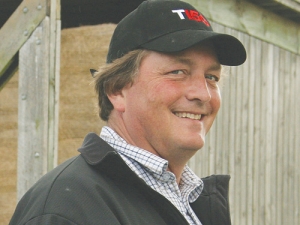When you have a hard problem and no solutions you tend to ignore it: that's what New Zealand has been doing about greenhouse gas emissions, says Anders Crofoot, Federated Farmers spokesman on climate change.
"That is what has been going on in New Zealand in the last while. But what I have been hearing from Wellington in the last several years is that not all gases should be treated the same," he told a NZ-Australia Climate Change and Business Conference in Auckland last week.
"[Better to] look at the different gases, look at the different sectors, see what the opportunities are and do things on a more targeted basis.
"I think that makes a lot of sense and you would get much better engagement by the primary sector and actually talk about something that seems possible, whereas the idea of zero biological emissions doesn't seem possible."
The Auckland conference was held ahead of a climate change summit in Paris in December. Diplomats spoke of high expectations a global agreement may be reached in Paris, with the Obama administration and China on board.
Crofoot said one of the worst things NZ did when it went into Kyoto (global climate change protocol adopted in 1997) was the 'all sectors, all gases mantra'.
"It rolled off the tongue nicely, it sounded great but unfortunately for the primary sectors -- that means biological emissions -- it sent a really bad message. Everybody could see you could eventually get those fossil fuels down to zero, because there were other options.... We actually haven't been using fossil fuels very long so it wasn't unreasonable to expect we'd find something better. So the main culprit is CO2 in respect of climate change.
"The problem with biological emissions is that unless we stop eating we're not going to stop those emissions."
Crofoot said farmers react against such glib suggestions as, "just cut your emissions by 30%". "The only option for doing that at the moment is to cut production by 30% which means cutting income by at least by 30%."
On the other hand, NZ farmers have been making gains of 1% or more annually by producing more efficiently, said Crofoot.
"In a global agricultural context that is important because if New Zealand stopped producing more... that's the food people are eating, so they would get it from somewhere else and [that supplier] might be less carbon efficient at producing it.
"The idea that New Zealand should just cut its emissions by dropping things by half doesn't make sense when you look at things in a global context."
Fonterra general manager group sustainability Emma Parsons said the emissions from the agricultural sector were largely methane and nitrous oxide, and our dairy processing remains reliant on fossil fuels.
"Our success as an industry depends on a stable climate, access to fresh water, healthy soils, biodiversity and relative freedom from pests and diseases. All these are likely to be impacted by climate change. With an estimated $1 per $5 of value created in the economy each year directly or indirectly linked to the agrifood industry, New Zealand's success as a country is closely linked to the rural sector's ability to mitigate and adapt to climate change."
Equally divided between sectors
Agriculture represents 47% of New Zealand greenhouse gas emissions and that is divided about 50/50 between dairy and sheep and beef, said Mark Aspin, manager of the Pastoral Greenhouse Gas Research Consortium (PGGRC).
The only target New Zealand on the books is a 50% reduction by 2050. The aim of PGGRC, which is backed by Government and a number of industry
players such as Fonterra and Beef+Lamb, is to reduce agricultural emissions intensity by 2.5% pa from 2020 – 1% through increased efficiency and 1.5% through additional direct mitigation options.
The three main agricultural greenhouse emissions in NZ are methane, nitrous oxide and carbon, with methane representing about 66-70% and nitrous oxide about 30%.
The global warning potential (GWP) of methane is 25 times that of CO2.
Methane comes from belching by ruminants and also represents a loss of feed energy – 6-8% of the energy an animal eats is lost by belching.
"That is an opportunity. Currently we are developing strategies to lower that but it is mindful of other impacts.
"We don't want to mess with the fermentation that drives our ruminants. We want to have a win-win," Aspin said.


















